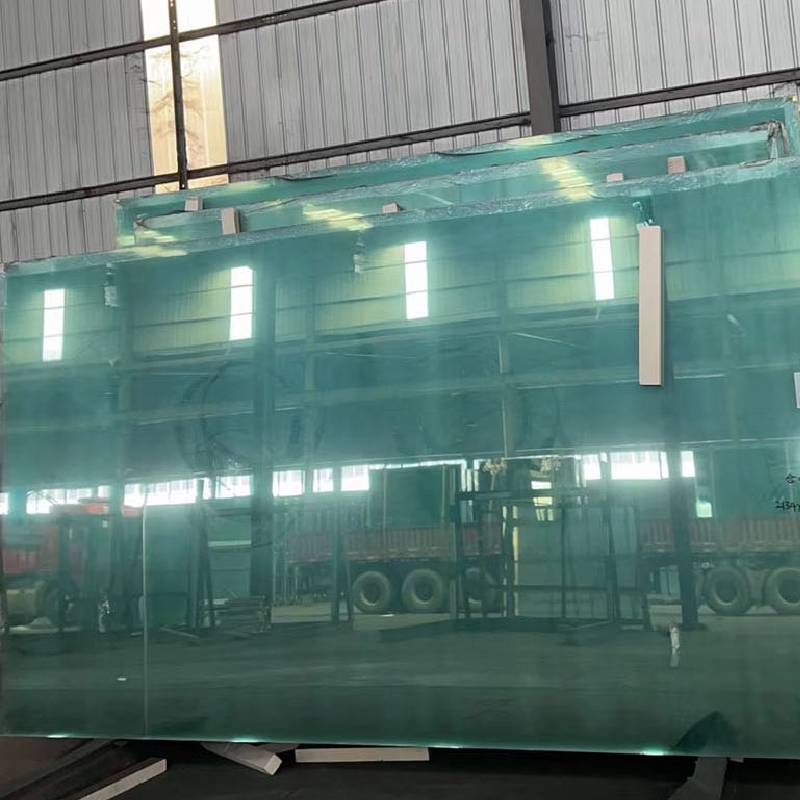The Versatile World of Flat Glass Mirrors
Flat glass mirrors are among the most ubiquitous objects in our daily lives, yet they often go unnoticed in their brilliance and utility. These mirrors, crafted from polished sheets of glass, play a crucial role across various sectors, including interior design, architecture, retail, and automotive industries. Their functionality extends beyond mere reflection; they also influence light, space perception, and aesthetic value.
The Science Behind Flat Glass Mirrors
At a fundamental level, a flat glass mirror consists of a glass substrate that is coated with a thin layer of reflective metallic film, typically aluminum or silver. This coating is what gives mirrors their reflective properties. The quality of the glass and the precision of the coating process are paramount as they determine the mirror's clarity and the accuracy of the reflection. High-quality flat glass mirrors provide a distortion-free view, making them essential for applications where detail is critical, such as in cosmetic use or high-end architectural designs.
Applications in Daily Life
Flat glass mirrors are everywhere in our homes. From bathroom mirrors that help us with our morning routines to decorative wall mirrors that enhance the aesthetics of our living spaces, they serve both functional and decorative purposes. Mirrors can create the illusion of larger spaces, a highly sought-after feature in contemporary interior design. By strategically placing mirrors, home decorators can optimize natural light and contribute to the overall ambiance of a room.
In retail environments, mirrors are invaluable tools for enhancing consumer experience. Clothing stores often use mirrors to create a “try-before-you-buy” atmosphere. Full-length mirrors allow customers to see how garments look from various angles, facilitating decision-making and encouraging purchases. Furthermore, mirrors can create a sense of depth in retail spaces, making them appear bigger and more inviting.
Architectural and Artistic Uses
flat glass mirror
In architecture, flat glass mirrors are used not just for their reflective qualities but also for their ability to manipulate light and space. Modern buildings often incorporate mirrored surfaces to blend the structure into its surroundings, creating a seamless aesthetic between nature and urban design. The reflective surfaces can also help reduce energy consumption by maximizing natural light within a space, ultimately lowering electricity costs.
Artists, too, have embraced flat glass mirrors as mediums for self-expression
. Artists incorporate mirrors into installations that challenge perceptions of reality and space, providing audiences with experiences that are at once immersive and introspective. For instance, using mirrors in art installations can create infinite reflections that intrigue viewers and prompt contemplation about identity and existence.
Advancements in Technology
The manufacture and technology surrounding flat glass mirrors have evolved significantly. Advances in production techniques have led to the development of lighter, more durable, and even smart mirrors that incorporate digital technologies. These smart mirrors feature touch screens, built-in lighting, and connectivity that allow users to access information, follow fitness routines, or check emails while they prepare for their day. The integration of augmented reality within mirrors is another exciting frontier, promising to revolutionize personal grooming and fashion by overlaying digital effects onto one’s reflection.
Environmental Considerations
With the growing emphasis on sustainability, manufacturers of flat glass mirrors are exploring eco-friendly materials and production methods. Modern glass mirrors are increasingly made from recycled materials, and companies are investing in processes that minimize waste and energy consumption. Sustainability in mirror production not only meets consumer demand for environmentally-friendly products but also aligns with broader efforts to combat climate change.
Conclusion
Flat glass mirrors are significant elements of our everyday environment, reflecting more than just our image; they reflect our society's innovative spirit and aesthetic aspirations. As technology continues to advance and environmental consciousness grows, the world of flat glass mirrors will undoubtedly continue to evolve, maintaining their place as functional, artistic, and essential objects in both our personal and public spaces. Whether enhancing a beautifying routine or elevating architectural designs, flat glass mirrors will remain timeless in their utility and appeal.
 Afrikaans
Afrikaans  Albanian
Albanian  Amharic
Amharic  Arabic
Arabic  Armenian
Armenian  Azerbaijani
Azerbaijani  Basque
Basque  Belarusian
Belarusian  Bengali
Bengali  Bosnian
Bosnian  Bulgarian
Bulgarian  Catalan
Catalan  Cebuano
Cebuano  Corsican
Corsican  Croatian
Croatian  Czech
Czech  Danish
Danish  Dutch
Dutch  English
English  Esperanto
Esperanto  Estonian
Estonian  Finnish
Finnish  French
French  Frisian
Frisian  Galician
Galician  Georgian
Georgian  German
German  Greek
Greek  Gujarati
Gujarati  Haitian Creole
Haitian Creole  hausa
hausa  hawaiian
hawaiian  Hebrew
Hebrew  Hindi
Hindi  Miao
Miao  Hungarian
Hungarian  Icelandic
Icelandic  igbo
igbo  Indonesian
Indonesian  irish
irish  Italian
Italian  Japanese
Japanese  Javanese
Javanese  Kannada
Kannada  kazakh
kazakh  Khmer
Khmer  Rwandese
Rwandese  Korean
Korean  Kurdish
Kurdish  Kyrgyz
Kyrgyz  Lao
Lao  Latin
Latin  Latvian
Latvian  Lithuanian
Lithuanian  Luxembourgish
Luxembourgish  Macedonian
Macedonian  Malgashi
Malgashi  Malay
Malay  Malayalam
Malayalam  Maltese
Maltese  Maori
Maori  Marathi
Marathi  Mongolian
Mongolian  Myanmar
Myanmar  Nepali
Nepali  Norwegian
Norwegian  Norwegian
Norwegian  Occitan
Occitan  Pashto
Pashto  Persian
Persian  Polish
Polish  Portuguese
Portuguese  Punjabi
Punjabi  Romanian
Romanian  Russian
Russian  Samoan
Samoan  Scottish Gaelic
Scottish Gaelic  Serbian
Serbian  Sesotho
Sesotho  Shona
Shona  Sindhi
Sindhi  Sinhala
Sinhala  Slovak
Slovak  Slovenian
Slovenian  Somali
Somali  Spanish
Spanish  Sundanese
Sundanese  Swahili
Swahili  Swedish
Swedish  Tagalog
Tagalog  Tajik
Tajik  Tamil
Tamil  Tatar
Tatar  Telugu
Telugu  Thai
Thai  Turkish
Turkish  Turkmen
Turkmen  Ukrainian
Ukrainian  Urdu
Urdu  Uighur
Uighur  Uzbek
Uzbek  Vietnamese
Vietnamese  Welsh
Welsh  Bantu
Bantu  Yiddish
Yiddish  Yoruba
Yoruba  Zulu
Zulu 

